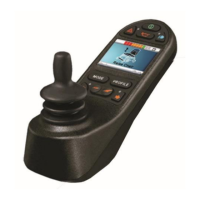3.11 INDICATOR LAMP FAILED
This occurs when the control system detects a failure in either of the Indicator Circuits. This is most likely to be an indic ator bulb
failure. Refer to section 2.3 for connection details
7207 - Left Indicator Failed
7208 - Right Indicator Failed
Check the indicator bulbs, cables and connections to the control system.
If the trip is still present after the above checks have been made, then the ISM may be defective. Refer to Section 5.
3.12 OVER-CURRENT
This occurs when the control system detects an excessive amount of current in an Actuator Channel.
This may be due to a faulty endstop switch, actuator motor, cables or connections.
Check the movement of the actuator is not obstructed.
Check the endstop switches (if fitted) are terminating the power to the actuator motor.
If the trip is still present after the above checks have been made, then the SM or ISM may be defective. Refer to Section 5.
3.13 OVERTEMP (ACTS)
This occurs when the control system detects that the SM or ISM’s actuator circuitry has become too hot. The control system will
cease drive to the actuator motor in question.
Allow the SM or ISM to cool.
If the SM or ISM is frequently overheating check the condition of the actuator motors and the connections to them.
If the trip persists contact your service agent.
3.14 OVERTEMP (LAMPS)
This occurs when the control system detects that the ISM’s lighting circuitry has become too hot. The control system will cease
supplying current to the lamp in question.
Allow the ISM to cool.
If the ISM is frequently overheating check the condition of all the connected bulbs and lamps.
If the trip persists contact your service agent.
3.15 DIME ERROR
This occurs when the control system detects an identification conflict between two modules in the system.
If a new module has been introduced:
Disconnect the new module and cycle the power.
If no trip is present connect the new module to the system and cycle the power.
If the trip reappears then the new module must be the cause of the problem.

